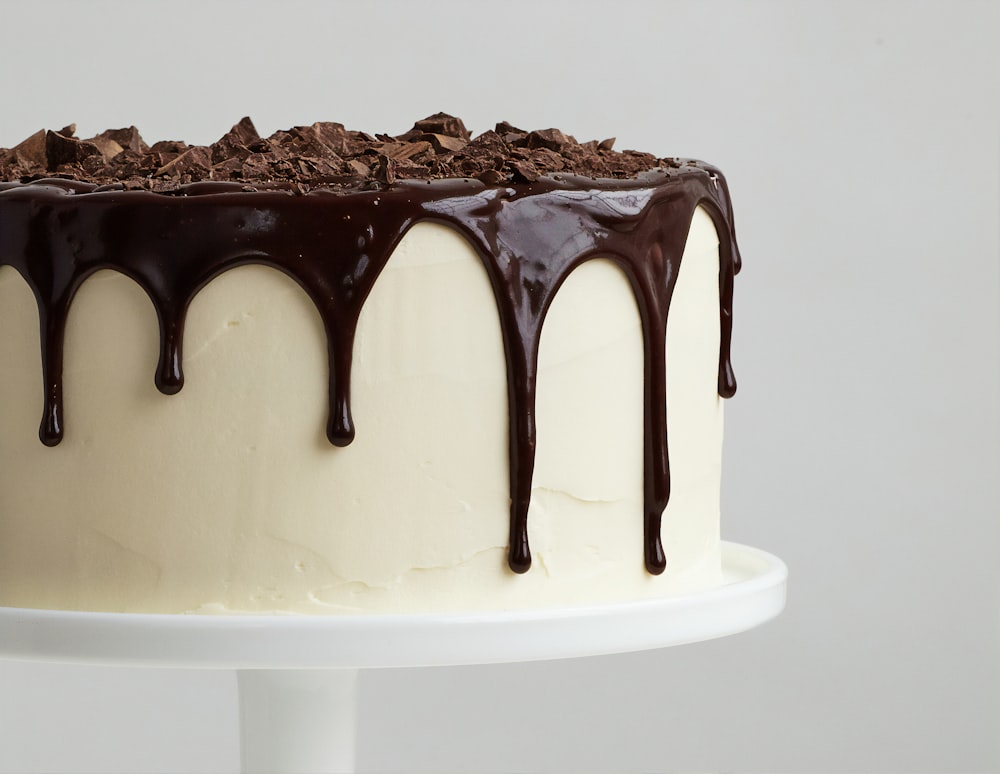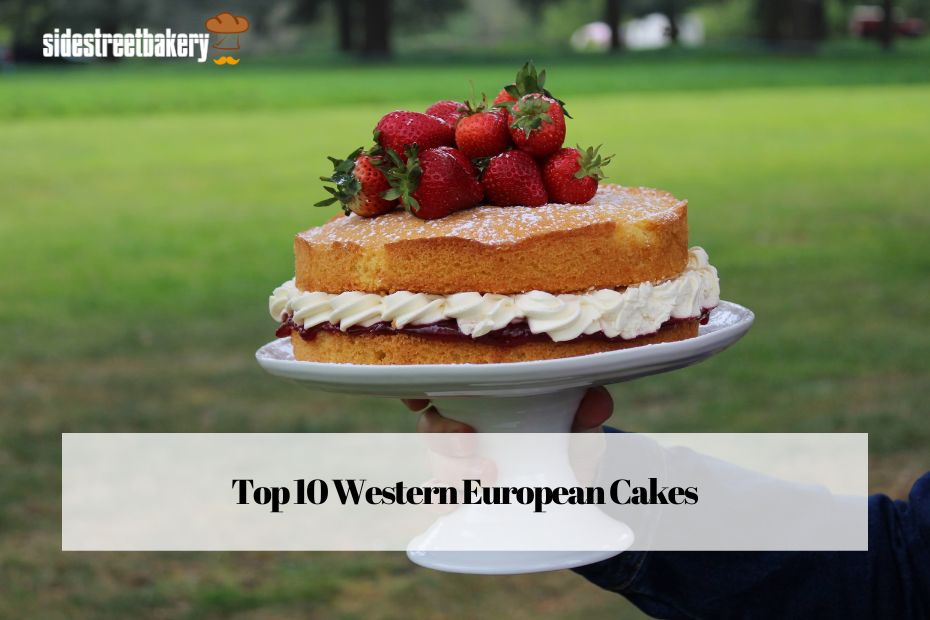When it comes to the realm of delectable cakes, a universe of flavors and textures unfolds before us. These sweet treats have transcended borders, becoming beloved in various corners of the globe. In this article, we’ll embark on a delightful journey through the world of cakes, exploring the history, unique characteristics, and cultural significance of some of the most iconic and mouthwatering cakes from around the world.
1. Karpatka: A Polish Delight
The Creamy Wonder from Poland
Karpatka, a popular Polish cream cake, is a testament to the artistry of Polish pastry chefs. This delectable dessert typically consists of two layers of pâte à choux, complemented by a sumptuous layer of creamy, vanilla-flavored pastry cream. Occasionally, the bottom crust is replaced with shortcrust pastry, while the top remains the ever-flavorful pâte à choux.
When a dusting of powdered sugar graces its uneven top, Karpatka becomes reminiscent of the snow-capped Carpathian mountains, from which it draws its name. While the origins of this treat remain somewhat mysterious, the earliest mention of Karpatka dates back to 1972. Often regarded as a close relative of the more renowned kremówka, this cake is a staple in Polish pastry shops and a cherished home-cooked dessert.
2. Kouign-Amann: The Breton Masterpiece
Butter, Sugar, and Flakiness Unveiled
Kouign-Amann, a pastry that originated in the 1800s in the picturesque French region of Bretagne, is a testament to the culinary wonders of France. Its name is a harmonious fusion of the Breton words for cake (kouign) and butter (amann). This cake is a splendid masterpiece, featuring layers of butter and sugar meticulously folded into a delicate dough.
Bretons proudly proclaim Kouign-Amann as “the fattiest pastry in the world,” owing to its flaky, golden dough, generously infused with sugar and butter. The cake’s origin stories are many, but the most popular one suggests that it was born out of serendipity. A 19th-century baker from Douarnenez, in an effort to salvage a failed batch of dough, incorporated butter and sugar into the mix, inadvertently giving birth to the delight we savor today.

3. Käsekuchen: The German Cheesecake
A Delicate Dance of Sweet and Sour
Käsekuchen, the German-style cheesecake, is a dessert of exquisite simplicity. It features a thin layer of shortcrust pastry as its base, elegantly crowned with a creamy blend of quark cheese, eggs, and occasionally, a variety of fruits. While it might draw comparisons to the classic American cheesecake, Käsekuchen’s use of lightly acidic quark cheese imbues it with a unique, delectable interplay of sweet and sour flavors.
Traditionally adorned with a delicate dusting of powdered sugar, Käsekuchen is a quintessential German treat enjoyed as a daily indulgence, often paired with coffee or tea. This cake is a testament to Germany’s rich culinary heritage, showcasing the country’s mastery of dessert.
4. Molten Chocolate Cake: A Global Sensation
The Irresistible Lava Cake
Molten Chocolate Cake, popularly known as lava cake, is a testament to the magic that can arise from kitchen mishaps. Chef Jean-Georges Vongerichten unwittingly removed his chocolate sponge cake from the oven prematurely, setting in motion a culinary sensation. As he cracked the spongy exterior, a luscious river of liquid chocolate burst forth, as if finally liberated.
Though French chef and chocolatier Jacques Torres claimed that a similar cake existed in France, it was Vongerichten who propelled the molten chocolate cake to global fame. Its journey began in the United States, making its way to the menus of esteemed, high-end restaurants worldwide. Molten Chocolate Cake is a testament to the allure of a dessert that marries contrasting textures, combining a delectably crisp exterior with a sumptuously gooey interior.

5. New York-Style Cheesecake: A Slice of Heaven
A Creamy, Sweet, and Tangy Delight
New York-style cheesecake stands apart from its cheesecake counterparts due to its dense, velvety texture that exudes richness. The flavor profile is distinct, featuring a delightful interplay of sweetness and tanginess, as opposed to being overly citrusy, chewy, or starchy. This iconic cake is believed to have originated in the 1950s, with Junior’s often credited as the pioneering bakery.
The secret to this delectable creation lies in its magic formula, which includes heavy cream, eggs, vanilla, cream cheese, and optionally, sour cream. This exquisite blend is often seated on a foundation of either a sponge cake crust or a graham cracker crust. New York-style cheesecake is a testament to culinary ingenuity, celebrating a dessert that marries creamy decadence with a perfect balance of flavors.
6. Japanese Cheesecake: A Feather-Light Delight
Soufflé Cheesecake – A Japanese Treasure
Known as soufflé cheesecake in Japan, and as cotton cheesecake or Japanese cheesecake outside of Japan, this ethereal dessert is a masterpiece of culinary finesse. It is crafted by incorporating whipped egg whites into a mixture of eggs, milk, sugar, and cream cheese. The resultant blend is then gently baked in a bain-marie, allowing it to achieve its signature cloud-like texture.
Japanese cheesecake distinguishes itself from traditional cheesecake by its remarkable fluffiness and sponge-like consistency. It’s often relished either warm or fresh out of the oven, where it seemingly dissolves on the palate. This delightful creation owes its origins to Japanese chef Tomotaro Kuzuno, who, during a visit to Germany in the 1960s, discovered käsekuchen, a German cheesecake, and was inspired to create this airy masterpiece.
7. Valašský Frgál: Czech Culinary Artistry
A Traditional Czech Sweet Cake
Valašský frgál, also known as violet, pecák, or lopaták, is a traditional delight hailing from the Moravian Wallachia region in the southeastern part of the Czech Republic. This round-shaped sweet cake is a work of art with its golden hue when fully baked. Its surface is adorned with a crumble, which can be further embellished with sugar, cinnamon, gingerbread crumbs, or a drizzle of butter.
What makes Valašský frgál truly intriguing is the abundance of toppings, accounting for nearly half of the finished product. These toppings can vary from dried pears, the most popular choice, to jam, fruits, curd cheese, poppy seeds, walnuts, cabbage, kohlrabi, or carrots. Each rendition of Valašský frgál is a unique masterpiece, celebrating the culinary diversity and creativity of the Czech Republic.

8. Kladdkaka: Sweden’s Chocolate Delight
Richness and Simplicity in Swedish Tradition
Kladdkaka, one of Sweden’s most beloved desserts, is a celebration of richness and simplicity. This classic Swedish creation melds eggs, cocoa (or chocolate), butter, sugar, and flour into a dense and indulgent delight. During baking, the cake maintains a moist, gooey center, while the outer layer transforms into a thin, crunchy coating.
The cake’s intense density and the pronounced bitterness of chocolate or cocoa are often balanced with a delicate dusting of powdered sugar. Traditionally served with a dollop of ice cream or whipped cream, Kladdkaka is a cherished part of Swedish culture, frequently enjoyed during fika, a traditional Swedish coffee break.
9. Medovik: Russia’s Honey-Infused Masterpiece
Layered Honey Cake from Russia
Medovik, a popular Russian delicacy, is a layered honey cake that beckons with its honey-infused, biscuit-like sponges. While there are countless variations of this cake, the custard usually consists of whipped cream or combinations of condensed milk and butter.
This delectable creation is believed to have made its debut in the 1820s and was purportedly created for the wife of Alexander I of Russia. The addition of condensed milk likely originated during the Soviet era, while contemporary versions might incorporate berries or even chocolate. Medovik stands as a testament to Russia’s culinary artistry, inviting us to savor the sweet nuances of honey in every bite.
10. Sernik: Poland’s Cheesecake Tradition
A Timeless Polish Dessert
Sernik, a cheesecake from Poland, is deeply rooted in the country’s Christian and Jewish traditions. Crafted with eggs, sugar, and twaróg, a type of curd cheese with a rich history in desserts, Sernik is believed to have its origins in the 17th century. Legend has it that King Jan III Sobieski introduced the recipe after his triumph at the Battle of Vienna.
Today, Sernik comes in various forms, some baked, some unbaked, but it is typically set on a bed of crumbly cake. Raisins, chocolate sauce, or fruits often find their way into this delightful creation. One of the most beloved varieties features a sponge cake base, adorned with jelly and an array of fruits. Sernik embodies Poland’s culinary heritage, offering a taste of tradition with each delectable bite.
conclusion
The world of cakes is a tapestry of flavors, textures, and traditions that celebrate the richness of cultures and the joy of indulgence. Each cake tells a unique story, connecting us to the history and culinary artistry of the regions from which they hail. Whether you’re savoring the creamy layers of Karpatka, the flaky goodness of Kouign-Amann, or the rich simplicity of Kladdkaka, these cakes are more than desserts; they are a slice of cultural heritage. So, let your taste buds embark on a global journey, one delectable cake at a time.






